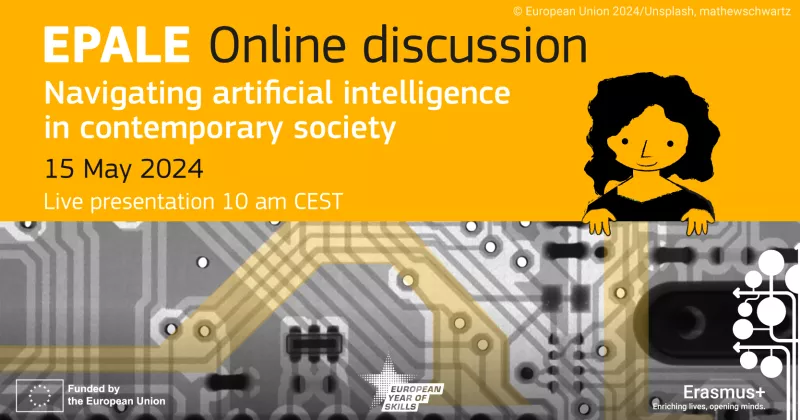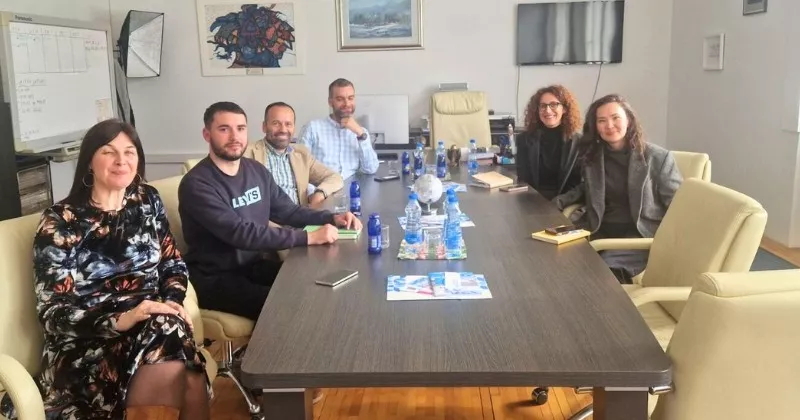MEDIATING THE MEDIATION - EOI Madrid-Villaverde and El Espinillo. Contribution to the E4ALL KA204 ERASMUS+ PROJECT

This is us
The Escuela Oficial de Idiomas (EOI) of Madrid-Villaverde and EOI El Espinillo are both located in Madrid and are 2 of the 36 state-run language schools distributed all throughout the Community of Madrid. In our schools, we currently issue language certificates (levels A1-C2) following the CEFR. The age of our students goes from 14-99 years old. In the last few years, a new skill has been introduced in our classrooms: the mediation.
The aim of this article is to briefly say what mediation is and how we have explained it to our European colleagues as part of the Erasmus+ project Education For All (E4ALL).
What is “mediation”?
The Common European Framework of Reference for Languages: learning, teaching assessment . Companion Volume with New Descriptors (hereinafter CEFR) published by the Council of Europe in 2018, introduces the concept of mediation as follows: ‘In both the receptive and productive modes, the written and/or oral activities of mediation make communication possible between persons who are unable, for whatever reason to communicate with each other directly. Translation or interpretation, a paraphrase, summary or record, provides for a third party a (re)formulation of a source text to which this third party does not have direct access. Mediating language activities, (re)processing an existing text, occupy an important place in the normal linguistic functioning of our societies.’(CEFR Section 2.1.3)
Despite this being new to us, mediation is no new area. It was during the 2000s and 2010s that the Working Group on mediation (CEPEJ-GT-MED) first developed mediation practices in Europe. This involved recommendations concerning family and school mediation, mediation in criminal matters, alternatives to litigation in administrative grounds and mediation in civil matters. With such a wide scope of conflicts to be solved, it came as no surprise that linguistic mediation was included in the CEFR Companion to give language teachers a new horizon to look at for methodological development.
Mediating the mediation
Considering all the above, as partners of the ERASMUS+ KA204 Project E4ALL, we invited participants from our partner organisations (Poland, Austria, Latvia, Italy, Greece) to get to know our work as a state-run language school in one of the most recent innovations in our curriculum: the introduction of Linguistic Mediation as a skill and exam subject.
Our Erasmus colleagues hardly knew anything about mediation as part of language teaching, and we decided to try to introduce them to this subject, offering them the opportunity to observe our classes.
In order to have a clear view of what mediation means in language education and education in general we first listed some key concepts involved in this innovative and paradigm shift (CEFR):
1. Learners are no passive recipients, they become social agents and active participants.
2. Knowledge is not “transmitted”, but rather becomes social, and collaborative, in its nature
3. Language is a tool for communication and not a subject of study in itself.
4. Rules do not rule; the learning becomes an action-oriented, goal oriented approach.
5. Following CEFR: Can-do’s and describing language in competences to be achieved.
6. Syllabuses start with the goal and are designed backwards, rather than from predetermined structural and lexical syllabuses.
7. Plurilingualism is the environment (not multilingualism and English only)
8. Mediation (not traditional language skills)
9. 4 modes of communication activities: reception, production, interaction, and mediation
10. Socio-cultural, pluricultural aspects involved in mediation.
All of this without forgetting that mediation is also in the core of team and collaborative work by means of these concepts: 1. making the group work by facilitating collaborative interaction of participants and collaborative concept building by means of Leading group work, 2. Managing interaction and 3. promoting concept conversations.
Hands-on tasks
Bearing in mind all this new vision, our work as teachers was to design real life, hands-on Mediation tasks to widen the range of active learning opportunities of our learners and at the same time think of new approaches to evaluate their achievement. To make things a little more complicated, we included interlinguistic and intralinguistic issues to train our learners in this pluri linguistic view of our societies where diversity of languages contributes to enrich our cultural experience.
While trying to mediate mediation to our partners, it was important to be aware of the context in which the need for mediation appeared. An image is worth more than a thousand words and it was during our short training at Wiener Neustadt, Austria, that we tried to show real life situations in which mediation happens spontaneously and explain them by recording some “knowledge pills”. The situations shown on the video clips recorded in Wiener Neustadt were: 1. asking for help in order to communicate with the shop cashier, 2. linguistic and cultural mediation explaining to a tourist how public bookcases work and 3. helping two foreigners to clear doubts about the identity of a lost cat.
Conclusions
As language teachers we are very grateful for the great opportunity mediation offers to help design our language curriculum with communicative tasks where meaningful learning and practice are bound to take place. This new linguistic approach to mediation in education aims at protecting linguistic and cultural diversity, promoting plurilingual and intercultural education, reinforcing the right to quality education for all, and enhancing intercultural dialogue, social inclusion and democracy. Language mediation works hand in hand with plurilingual/pluricultural competence development. And of course this diversity must not forget the plurigenerational environment of our ever changing world which should be another source of collaboration and advancement.
María López Barcia and Erasmus+ team from EOI Madrid-Villaverde and EOI El Espinillo




